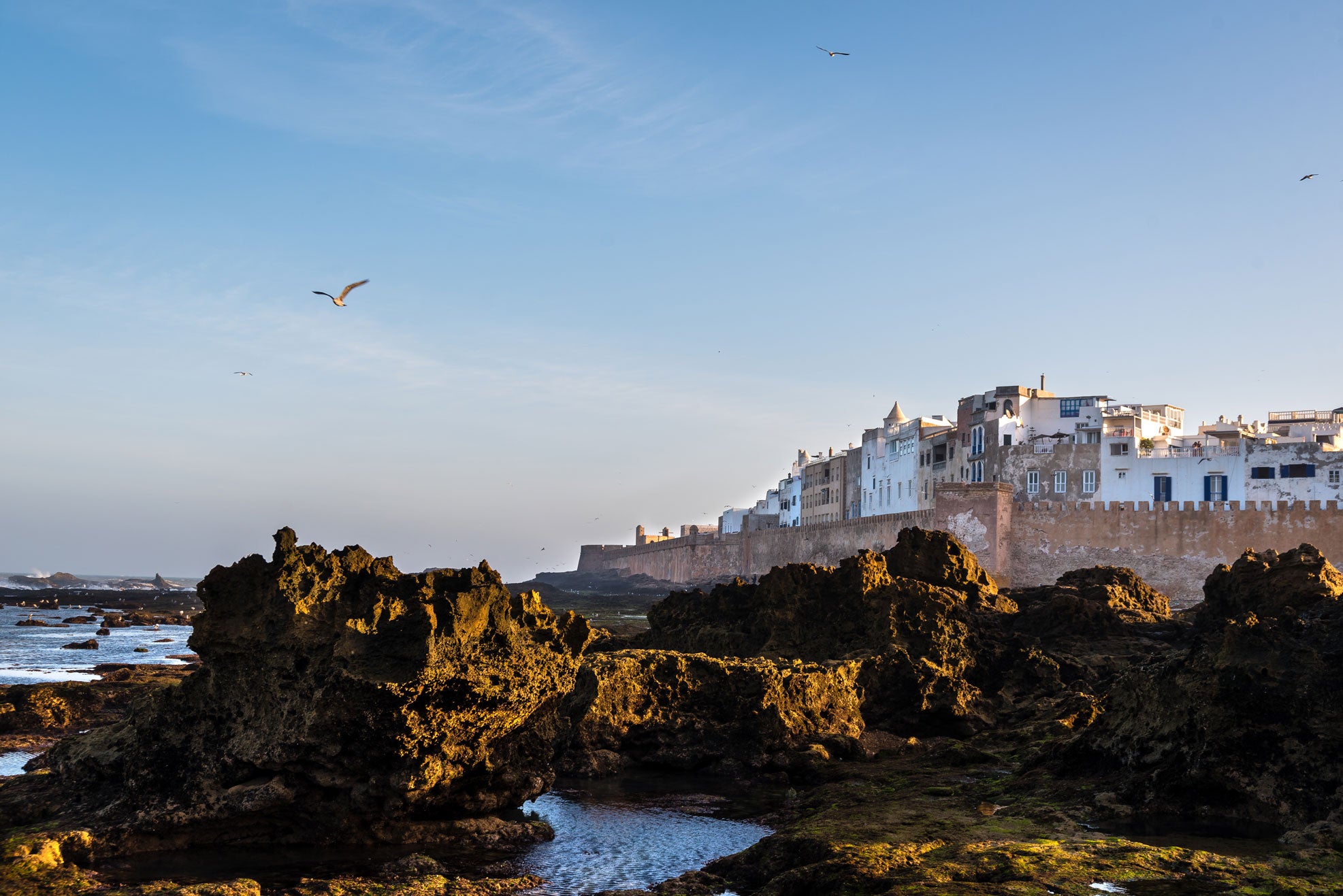HARVEST SEASON
THE TREE OF LIFE
ESSAOUIRA, MOROCCO
Scroll to explore
The Story Told In Partnership with Atelier Doré
IN CONVERSATION WITH khadija el fakLA
argan cooperative member, essaouira, morocco
Khadija El Fakla is a member of the Marjana Cooperative located near Essaouira, Morocco. Khadija works alongside sixty-five local women who harvest and process argan kernels into two different oils, one for culinary and the other for cosmetic purposes. It is believed that the antioxidant rich oils derived from the tree have been utilized by the natives for nearly three thousand five hundred years to sustain their diets and beauty regimens.

Argan is a
KHADIJA EL FAKLA, ARGAN COOPERATIVE MEMBER
gift from Allah, given to the women
of this area to share with the women
of the world.
S+O — WHAT IS THE SIGNIFICANCE OF THE ARGAN TREE TO THIS AREA OF MOROCCO?
El Fakla — The argan tree is a tree found only in the southwest of Morocco, between Essaouira and Agadir. It’s an ancient tree that our ancestors have been harvesting for thousands of years. We find it in natural forests all around us. Because you can only find it here, we believe that argan is a gift from Allah, given to the women of this area to share with the women of the world.
S+O — WHY IS IT IMPORTANT FOR WOMEN, IN PARTICULAR, AS AN OCCUPATION?
El Fakla — There aren’t many opportunities to find work here apart from tourism. The women of this region have already been using argan at home for many years. So to be able to come together as a cooperative and do this work, allows us to support our families and our livelihoods doing something that we love to do anyway. And it doesn’t feel like work. It feels more like spending time with your family.

S+O — HOW IS ARGAN HARVESTED?
El Fakla — Harvest is done during the months of July and August when weather is very hot here. The women wake up in the early morning, at sunrise, and go into the argan forests. They only take the argan nuts that have fallen from the trees. As they gather together, they sing and they talk. It’s hard work under intense heat, but it is amazing because it is just us women enjoying what we do.
S+O — WHAT HAPPENS AFTER THE HARVEST?
El Fakla — Once we have finished the harvest, we spend the rest of our time making the oils. The kernels must be separated from the nuts. This is done by hand. Then the kernels are prepared for either edible or cosmetic oil. Raw kernels are used for the cosmetic oil, and they are processed with modern machines for purity purposes. For the edible oil, we roast the kernels first before grinding and pressing.



S+O — WHAT ARE THE TRADITIONAL USES OF ARGAN?
El Fakla —As I mentioned, the women of this region have been using this tree for a long time. We believe it started as making edible oil for cooking, but we also used it as a treatment for our hair, faces and our bodies. Today, we continue to make the edible oil using the traditional methods I described. But the cosmetic oil is much harder to produce due to high demand. That’s why we had to modernize our approach.
S+O — NOW THAT THE OIL HAS BECOME KNOWN WORLDWIDE, HOW HAS THIS CHANGED THE LOCAL RELATIONSHIP WITH THE OIL?
El Fakla — Now that argan oil has become famous around the world, we feel very lucky. But we also feel a great responsibility given that we are offering something that has become important in the lives of others. It’s truly something made by women for women. When this oil is made, women feel the love behind it. We put our heart and our story into this oil. This is why we believe it gives women the results that they desire.
We put our
heart and our story
into this oil.

Credits
Photography by Abdellah Azizi
Filming by Abdellah Azizi
Special Acknowledgments - The women of the Marjana Cooperative
The Objects
Exclusive Edition 018 ARGAN BODY OIL
S+O has collaborated with Atelier Doré on their first creative retreat, The Art of Storytelling in Marrakech, Morocco. Together, we present this Argan body oil supplemented with the essences of neroli, jasmine and a hint of almond. Argania spinosa is known as the “Tree of Life” by Moroccans, where it grows naturally in a semi-desert region between Marrakech and the Atlantic port cities of Agadir and Essaouira. The oil was formulated to maximize the beautifying benefits of argan with pleasant floral notes familiar to those who have visited the vibrant country.
The Destination
ESSAOUIRA, MOROCCO
Essaouira, Morocco is an ancient port city also known as Mogador. It was likely established as a key seaside trading post during the fifth century before common era by a Carthaginian navigator named Hanno. The picturesque old medina is protected by eighteen century seafront ramparts lying adjacent to the main beach where one can watch the sun slip past the horizon just behind the namesake landmark island. Its serene pace and fresh seafare makes it a destination favored amongst natives and travelers alike.



